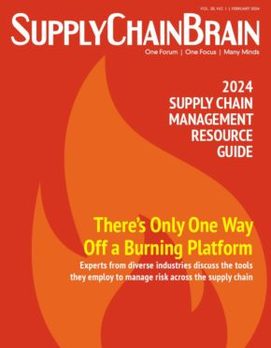
Think Tank
Lessons Learned: How the Pandemic Changed Supply-Chain Practices
The onset of the coronavirus epidemic has accelerated the supply-chain digital transformation that has languished on businesses’ “to-do” list for years. Chaos from the coronavirus has made clear that procurement and supply-chain practices need to get smarter. COVID-19 has exposed barriers to collaboration that most companies tolerate under normal circumstances. Supply chains have been badly disrupted. And yet the worst of the pandemic may still lie ahead.
Even so, the experience of the past eight months has driven home some important lessons about procurement — both strengths and weaknesses — that are likely to apply well past the time that the virus itself finally subsides. In many instances what COVID has done has been to highlight challenges which existed all along, but they were issues that many regarded as tolerable. However, as a result of the pandemic, the need for addressing them has intensified.
One of the most important issues the pandemic exposed has been that most manufacturers have only a limited view into any of their suppliers beyond Tier One. Most have little understanding of who is supplying their suppliers or those suppliers’ suppliers. As a result, they can be caught off balance, unable to promptly address the ripple effects that problems further down the supply chain can have on their own operations.
Early on in the spread of COVID-19, at least 51,000 companies from all around the world, including 163 of the Fortune 1000, had one or more Tier One suppliers in and around the Wuhan, China industrial zone, where the virus originated, according to Dun & Bradstreet. That’s serious, but it didn’t stop there. At least five million companies, which include nearly all of the Fortune 1000, had one or more Tier Two and Three suppliers in the affected region. That’s huge. Yet the lack of visibility into the condition of those suppliers, where major exposures to disruption had occurred, was almost universal. So here is what we’ve learned from the experience so far:
Look beyond Tier One. Work on finding out who your suppliers, who they subcontract to and who your suppliers’ suppliers are and on developing ways to monitor the risks they face so you can assess the potential for serious disruptions to your supply chain. Ensure there is a structure manner in which to maintain this information and act on it.
Decide whether to stay home or go abroad. Making this decision involves evaluating the reliability of your outsourced suppliers’ suppliers versus re-shoring your supply chain. Until this year, that wasn’t really much of an issue. But things have changed, although addressing the impact of such a move isn’t easy. The central idea is that a global pandemic can disrupt a company’s supply chains. So is outsourcing your company’s manufacturing to China or other far-away countries really a good idea? Or should you try to bring that work back to the U.S. where it’s closer to home and to possibly experience less disruption? The current status of coronavirus in the U.S. and increasing tensions with China should also weigh on that decision. For most companies, the jury is still out.
Be careful about changing partners. If you’re thinking of changing suppliers, particularly if you’re going into new regions and different parts of the world, you’ll need some due diligence to evaluate them and understand the risks of any potential new relationships. Particularly if you have been dealing with one particular group of suppliers for a long time, recognize the impact that starting with a new supplier could have on your business. How do you assess that risk? And which suppliers are you replacing?
Check supplier finances. For years, monitoring a supplier’s financial stability had been considered a check-box sort of activity for most companies, but now it’s a high-level issue. You need to know if your supplier will be able to survive the next year, particularly if you’re going to commit to them contractually. You’ll have to dig deeper to understand their financials. Find out if they have a contingency plan in the event something does go wrong with their current business. You’ll also need to have a contingency plan of your own for an alternative supplier in case things go south. Agility in the supply chain has become more important than ever.
Show some empathy. Suppliers have preferences just as manufacturers do. When times are difficult, suppliers are more responsive to those who pay in a timely way than those who string out payments and beat them up over pricing. Particularly if your organization is thinking about some sort of collaboration with a supplier, consider what sort of customer that supplier might want to innovate with. And if a favored supplier is in trouble, consider helping them through their difficulties to reinforce your relationship and build a more resilient supply chain.
Look into automation. One of the pandemic’s results has been to accelerate the enterprise digitization process. Transformation initiatives may know consist of smaller, quicker initiatives but this may in the longer be a faster way to achieve the broader digital transformation goals that many have had for years. Looking for solutions to achieve quick wins, such as automating the sourcing process or the contract management process can drive these initiatives forward.
This recent crisis underscores the need for organizations to establish and maintain effective proactive risk management programs for their supply chain. While it is impossible for organizations to anticipate these types of outbreaks, an effective risk management program, complete with processes, tools, and data can lessen the impact and the time it takes an organization to recover. Supply chains are showcasing singular resourcefulness and adaptability, though the challenges are far from over. But the outcome may be fundamental changes and a whole host of managers and regulators who find it second-nature to rethink global models and supply dependencies.
Vishal Patel is vice president of product marketing at Ivalua, a provider of global spend management cloud solutions.






